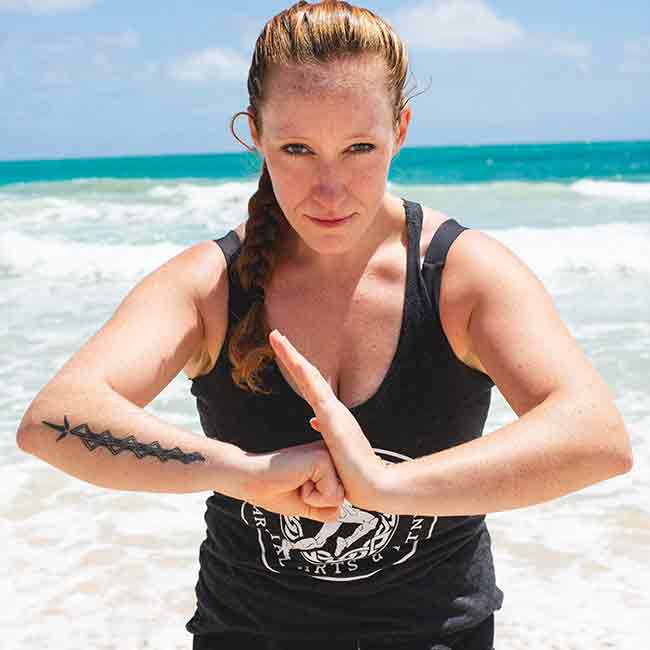



In addition to Wing Chun being Bruce Lee’s core system, he incorporated various techniques from Northern Praying Mantis, Southern Praying Mantis, Choy Li Fut, Eagle Claw, Western Boxing, Wrestling, Fencing, Judo, Jiu Jitsu, as well as Northern & Southern Chinese styles. He would later go on to incorporate and adapt his art and concept of JKD to include Filipino martial arts, Savate (French Kickboxing), and aspects of Karate.
Wing chun, much like in Filipino martial arts, is designed to defend and attack simultaneously. Wing Chun uses the structure of the entire body to create power in a small space, allowing for surprise attacks from varying directions, giving the element of surprise. The art originated and was designed with crowded urban environments such as cities and tighter living quarters and spaces. Wing chun works especially well in tight spaces like an elevator, backed into a corner or tight space, cramped hallway or stairwell. It is primarily an empty hand art that go for soft target areas and do not relent on attack until the opponent is sufficiently overwhelmed.


Wing Chun has an incredible capacity to be able to train its students to have increased hand speed, timing, spacial awareness, and understanding ‘sense of touch’ in close quarter combat. It is a standing form of trapping and grappling that teaches the student routing, redirection of a strike, close quarter strikes and counters, using both hands and feet. It is an art that instills the idea and application of pull and push energy release and transfer. It teaches the student to be both soft and hard in their techniques for smooth flow, transitions, and overall efficacy.